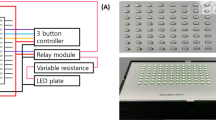Abstract
To search for edible herbal extracts with potent antioxidant activity, we conducted a large scale screening based on the superoxide scavenging activity. That is, scavenging activity against superoxide anions were extensively screened from ethanol extracts of approximately 1,000 kinds of herbs by applying an electron spin resonance (ESR)-spin trapping method. Among them we chose four edible herbal extracts with prominently potent ability to reduce the signal intensity of 5,5-dimethyl-1-pyrroline-N-oxide (DMPO)–OOH, a spin adduct formed by DMPO and superoxide anion. They are the extracts from Punica granatum (Peel), Syzygium aromaticum (Bud), Mangifera indica (Kernel), and Phyllanthus emblica (Fruit), and are allowed to be used as foodstuffs according to the Japanese legal regulation. The ESR-spin trapping method coupled with steady state kinetic analysis showed that all of the four extracts directly scavenge superoxide anions, and that the superoxide scavenging potential of any of the extracts was comparable to that of L-ascorbic acid. Furthermore, polyphenol determination indicates that the activity is at least in part attributable to polyphenols. These results with such large scale screening might give useful information when choosing a potent antioxidant as a foodstuff.





Similar content being viewed by others
Abbreviations
- SOD:
-
superoxide dismutase
- ESR:
-
electron spin resonance
- HPX:
-
hypoxanthine
- XOD:
-
xanthine oxidase
- DMPO:
-
5,5-dimethyl-1-pyrroline-N-oxide
References
Skulachev VP (2005) Biogenetic aspects of apoptosis, necrosis and mitoptosis. Apoptosis 4:473–485
Wallace DC (2005) A mitochondrial paradigm of metabolic and degenerative diseases, aging, and cancer: a dawn for evolutionary medicine. Annu Rev Genet 39:359–407
Jezak P, Hlavata L (2005) Mitochondria in homeostasis of reactive oxygen species in cell, tissues, and organism. Int J Biochem Cell Biol 37:2478–2503
Keele BB, McCord JM, Fridovoch I (1970) Superoxide dismutase from Escherichia coli B. J Biol Chem 245:6176–6181
Goldstein S, Meyerstein D, Czapski G (1993) The Fenton reagents. Free Radic Biol Med 15:435–445
Haber F, Weiss J (1934) The catalytic decomposition of hydrogen peroxide by iron salts. Proc R Soc London Ser A 147:332–351
Buettner GR (1987) Spin trapping: ESR parameters of spin adducts. Free Rad Biol Med 3:259–303
Rosen H, Klebanoff SJ (1979) Hydroxyl radical generation by polymorphonuclear leukocytes measures by electron spin resonance spectroscopy. J Clin Invest 64:1725–1729
Tanabe K, Masuda A, Hirayama S, Nagase S, Kono I, Kuno S (2006) Effect of spontaneous exercise on antioxidant capacity in rat muscles determined by electron spin resonance. Acta Physiol 186:119–125
Opie LH, Lecour S (2007) The red wine hypothesis: from concepts to protective signaling molecules. Eur Heart J 28:1683–1693
Karatzi KN, Papamichael CM, Karatzis EN, Papaioannou TG, Aznaouridis KA, Katsichti PP, Stamatelopoulos KS, Zampelas A, Lekakis JP, Mavrikakis ME (2005) Red wine acutely induces favorable effects wave reflections and central pressures in coronary artery disease patients. Am J Hypertens 18:1161–1167
Papamichael C, Karatzi K, Karatzis E, Papaioannou TG, Katsichti P, Zampelas A, Lekakis J (2006) Combined acute effects of red wine consumption and cigarette smoking on haemodynamics of young smokers. J Hypertens 24:1287–1292
Sato M, Maulik N, Das DK (2002) Cardioprotection with alcohol: role of both alcohol and polyphenolic antioxidants. Ann NY Acad Sci 957:122–135
Martinez J, Moreno JJ (2000) Effect of resveratrol, a natural polyphenolic compound, on reactive oxygen species and prostaglandin production. Biochem Pharmacol 59:865–870
Leonard SS, Xia C, Jiang BH, Stinefelt B, Klandorf H, Harris GK, Shi X (2003) Resveratrol scavenges reactive oxygen species and effects radical-induced cellular responses. Biochem Biophys Res Commun 309:1017–1026
Frankel EN, Kanner J, German JB, Parks E, Kinsella JE (1993) Inhibition of human low-density lipoprotein by phenolic substances in red wine. Lancet 341:454–457
Kanner J, Frankel EN, Granit R, German B, Kinsella JE (1994) Natural antioxidant in grapes and wines. J Agric Food Chem 42:64–69
Kinsella JE, Frankel EN, German JB, Kanner J (1993) Possible mechanisms for the protective role of antioxidants in wine and plant foods. Food Technol 47(4):85–89
Sato E, Kohno M, Hamano H, Niwano Y (2006) Increased anti-oxidative potency of garlic by spontaneous short-term fermentation. Plant Foods Hum Nutr 61:157–160
Sato E, Niwano Y, Matsuyama Y, Kim D, Nakashima T, Oda T, Kohno M (2007) Some dinophycean red tide planktons generate a superoxide scavenging substance. Biosci Biotechnol Biochem 71:704–710
Niwano Y, Sato E, Kohno M, Matsuyama Y, Kim D, Oda T (2007) Antioxidant properties of aqueous extracts from red tide plankton cultures. Biosci Biotechnol Biochem 71:1145–1153
Kohno M, Mizuta Y, Kusai M, Masumizu T, Makino K (1994) Measurements of superoxide anion radical and superoxide anion scavenging activity by electron spin resonance spectroscopy coupled with DMPO spin trapping. Bull Chem Soc Jpn 67:1085–1090
Schanderl SH (1970) Tannins and related phenolics. In: Joslyn MA (ed) Methods in Food Analysis. Academic, New York, pp 701–724
Watts RW, Wats JA, Seegmiller LE (1965) Xanthine oxidase activity in human tissues and its inhibition by allopurinol (4-hydroxypyarazolo[3,4-d] pyrimidine). J Lab Clin Med 66:688–697
Nicoué EE, Savard S, Belkacemi K (2007) Anthocyanins in Wild Blueberries of Quebec: Extraction and Identification. J Agric Food Chem 55:5626–5635
Cui T, Nakamura K, Tian S, Kayahara H, Yian YL (2006) Polyphenolic content and physiological activities of Chinese hawthorn extracts. Biosci.Biotechnol Biochem 50:2948–2956
Cerdá B, Llorach R, Cerón JJ, Espín JC, Tomás-Barberán FA (2003) Evaluation of the bioavailability and metabolism in the rat of punicalagin, an antioxidant polyphenols from pomegranate juice. Eur J Nutr 42:18–28
Prabhu S, Jainu M, Sabitha KE, Devi CS (2006) Role of mangiferin on biochemical alterations and antioxidant status in isoproterenol-induced myocardial infarction in rats. J Ethnopharmacol 107:126–133
Habib-ur-Rehman, Yasin KA, Choudhary MA, Khaliq N, Atta-ur-Rahman, Choudhary MI, Malik S (2007) Studies on the chemical constituents of Phyllanthus emblica. Nat Prod Res 21:775–781
Acknowledgments
This work was supported by a grant of Kampou Science Foundation.
Author information
Authors and Affiliations
Corresponding author
Rights and permissions
About this article
Cite this article
Saito, K., Kohno, M., Yoshizaki, F. et al. Extensive Screening for Edible Herbal Extracts with Potent Scavenging Activity against Superoxide Anions. Plant Foods Hum Nutr 63, 65–70 (2008). https://doi.org/10.1007/s11130-008-0071-2
Received:
Accepted:
Published:
Issue Date:
DOI: https://doi.org/10.1007/s11130-008-0071-2




